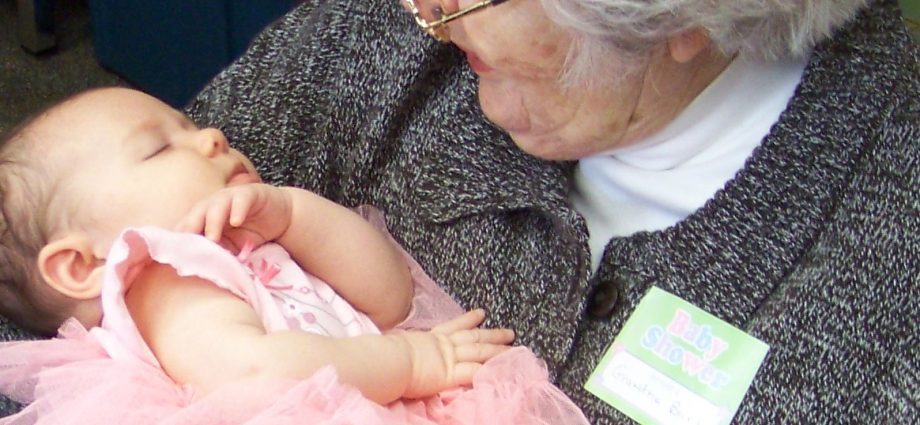 CFN – Had William Shakespeare been a 21st century journalist instead of a 17th century playwright, his famous line: Something is rotten in Denmark (an allusion to political shortsightedness) might well go something like this:
CFN – Had William Shakespeare been a 21st century journalist instead of a 17th century playwright, his famous line: Something is rotten in Denmark (an allusion to political shortsightedness) might well go something like this:
“Something’s right in Denmark but rotten in Canada.”
And in effect, William would be talking about Denmark’s political farsightedness by modernizing its healthcare model for the aging population; evidence Dr. Sinha considered while developing Ontario’s newly launched strategy called Living Longer, Living Well.
But more on the Denmark data below. First, some background on Canada’s now antiquated model.
In 1957 – the year Elvis Presley’s “All shook up” was at the top of the pop charts – medicare was launched nationally. At that time, the average age of Canadians was under 30 and our publicly funded hospitals were designed to deliver acute care. In other words, places to go for emergency care, elective surgery, to give birth, or to die.
Meanwhile – and due primarily to 20th century public health measures, including clean water, sanitation, and life-saving antibiotics and vaccines – life expectancy for both men and women rose to unprecedented highs.
and vaccines – life expectancy for both men and women rose to unprecedented highs.
Right now, the average Canadian is near age 50, and most of us can one day expect to have 80 birthday candles to blow out, or more.
Here’s the rub. For at least 30 years, demographers, governments, epidemiologists, social scientists and others leaders have been analyzing the statistics associated with the postwar baby boom and its corollary age wave. Yet, we’ve done little to modify the Canadian healthcare model to meet the needs of the 21st century.
Conclusion: The 1950s model doesn’t work today.
Question: Should we be panicking?
Answer: No. There are challenges but we have opportunities.
Below are some of the opportunities that form part of the bigger picture that Dr. Sinha addressed in Cornwall last week when he was live-streamed into the boardroom of the Champlain CCAC on Cotton Mills.
The biggest slice of Ontario’s healthcare spending goes to hospitals at 35 percent, while only 8 and 6 percent, respectively, go to longterm care and community care.
So lets compare prices, or taxpayer dollars.
- One day in hospital costs: $1,000.
- One day in longerterm care costs: $130.
- One day of home/community care costs: $55.
- Denmark avoided building any new LTC beds over two decades, and actually saw the closure of thousands of hospital beds by strategically investing more in its home and community care services.
- The Ontario government while freezing its hospital budgets has committed to an annual 4 percent increase in the home and community care budget from 2011 through to 2014.
If at this point you’re asking: What do we do about the shortage of long term care beds, you’re right to ask. There is still a shortage. 19,000 Ontarians remain on waitlists. But early results of the “Home First” initiatives have helped. The numbers are beginning to go in the right direction.
Remember too, the majority of older people don’t need or want to end up in long term care. And shortening or avoiding hospital stays by receiving care at home or in the community, can actually contribute to aging well.
The next report on Ontario’s strategy will focus on the No. 1 strategic focus of Living Longer, Living Well: Supporting the development of elder friendly communities, something every municipal government in Ontario will want to be familiar with if Ontario is to attain its goal of being the best place to grow up and grow old in North America.
 About Dr. Samir Sinha:
About Dr. Samir Sinha:
Dr. Samir K. Sinha is the Provincial Lead for Ontario’s Seniors Strategy.
He currently serves as the Director of Geriatrics at Mount Sinai and the University Health Network Hospitals in Toronto.
Dr. Sinha is working with the Ontario government and other health partners to implement recommendations in the Living Longer, Living Well report released earlier this year.
The report calls for increased investment in home and community care to support an aging population with increasingly complex health needs.


Dr. Sinha is one of those rare individuals who can make a difference in the way you see things. Ageless, scientific, optimistic, delightfully funny. A leader. Thank you to the CCAC for inviting us to report. Wish more reporters had turned out.
Mary Anne that is a great article but there is something that is left out and that is when people have “dementia” which is on the increase nowadays then these people cannot remain in the home alone and have to have constant supervision and they have to be placed. There are not enough beds and facilities for these people. That is why I along with Mr. Mark MacDonald and some others would have liked to see the old General Hospital converted into such a facility since the Glen is full to capacity. Yes home care is a great deal less expensive than in a hospital setting but when it is needed for those who can no longer remain alone nor care for themselves then they have to be placed.
@ Jules, YES. Thank you. My Dad suffered early onset Alzheimer’s but lived at home with my mom till he was 80. So I know what you’re saying. Without my devoted and loving mother, there was no way he could live alone. I too went to the meeting about the old General…as I recall, on a frigid dark night that made me think about elderly shut-ins. Yes, we need LTC residences for our special needs loved ones – could be any one of us. I’ll go back to my notes and remind myself what Dr. Sinha talked about regarding investments in LTC beds. Please stand by.
@ Jules: According to the notes, (and I quote): current projections see the need for Long-Term Care increasing to 238,000 Ontarians in the next two decades.
I expect many people will be suffering some some kind of dementia, and we need to protect them. …could be any one of us.
Some of the most fortunate people, could live safely at home with the right family and outside support.
And of course, there would have to be support for the caregivers as well.
Thank you very much Mary Anne for your response. My dad was mighty sick and mom cared for him even with her cancer and diabetes and mom was diagnosed with alzheimers disease as well (the beginning stages) and it progressed more as she went on. Mom died of her cancer after her battle of 30 years.
I am a boomer and we are all aging and yes long term care is a must and it is in big demand as we speak. I am for the former General Hospital to be converted into long term care and not for some private for profit kind of care and certainly not another useless arena for the rich. Something has to be done now since there are a long list of names waiting for care.
I am very much for home care all the way but my issue is for those who cannot remain any longer in their homes. We had a friend who died recently at age 58 of lymphoma and he and his brothers placed their mother in long term care here in Ottawa since she has dementia and he said that he wanted her cared for before he died. Caring for one with dementia is a mighty hard job and it requires special people to deal with this and very hard on regular care givers as well as family to see them deteriorate. We lost our good friend at the end of March and we always think about him – he was 3 years my junior and too young to die.